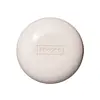What's inside
What's inside
 Key Ingredients
Key Ingredients

 Benefits
Benefits

 Concerns
Concerns

 Ingredients Side-by-side
Ingredients Side-by-side

Sodium Cocoyl Isethionate
CleansingHydrogenated Vegetable Oil
EmollientPolyglyceryl-4 Laurate
EmulsifyingWater
Skin ConditioningGlycerin
HumectantAvena Sativa Kernel Flour
AbrasiveDistarch Phosphate
AbsorbentButyrospermum Parkii Butter
Skin ConditioningAvena Sativa Bran
AbrasivePanthenol
Skin ConditioningAloe Barbadensis Leaf Juice
Skin ConditioningAvena Sativa Kernel Extract
AbrasiveCamellia Sinensis Leaf Extract
AntimicrobialLimnanthes Alba Seed Oil
Skin ConditioningTocopheryl Acetate
AntioxidantTetrasodium Glutamate Diacetate
Maltodextrin
AbsorbentQuercetin
AntioxidantCI 77891
Cosmetic ColorantSodium Cocoyl Isethionate, Hydrogenated Vegetable Oil, Polyglyceryl-4 Laurate, Water, Glycerin, Avena Sativa Kernel Flour, Distarch Phosphate, Butyrospermum Parkii Butter, Avena Sativa Bran, Panthenol, Aloe Barbadensis Leaf Juice, Avena Sativa Kernel Extract, Camellia Sinensis Leaf Extract, Limnanthes Alba Seed Oil, Tocopheryl Acetate, Tetrasodium Glutamate Diacetate, Maltodextrin, Quercetin, CI 77891
Sodium Cocoyl Isethionate
CleansingStearic Acid
CleansingWater
Skin ConditioningSodium Isethionate
CleansingCI 77891
Cosmetic ColorantCocamidopropyl Hydroxysultaine
CleansingPotassium Phosphate
BufferingCeramide NP
Skin ConditioningCeramide AP
Skin ConditioningCeramide EOP
Skin ConditioningCarbomer
Emulsion StabilisingGlycerin
HumectantCetearyl Alcohol
EmollientCeteareth-20
CleansingDimethicone
EmollientBehentrimonium Methosulfate
Sodium Chloride
MaskingSodium Lauroyl Lactylate
EmulsifyingSodium Hyaluronate
HumectantCholesterol
EmollientPhenoxyethanol
PreservativeDisodium EDTA
Dipotassium Phosphate
BufferingTocopherol
AntioxidantCaprylic/Capric Triglyceride
MaskingPetrolatum
EmollientPhytosphingosine
Skin ConditioningXanthan Gum
EmulsifyingEthylene Brassylate
MaskingCetyl Alcohol
EmollientEthylhexylglycerin
Skin ConditioningSodium Cocoyl Isethionate, Stearic Acid, Water, Sodium Isethionate, CI 77891, Cocamidopropyl Hydroxysultaine, Potassium Phosphate, Ceramide NP, Ceramide AP, Ceramide EOP, Carbomer, Glycerin, Cetearyl Alcohol, Ceteareth-20, Dimethicone, Behentrimonium Methosulfate, Sodium Chloride, Sodium Lauroyl Lactylate, Sodium Hyaluronate, Cholesterol, Phenoxyethanol, Disodium EDTA, Dipotassium Phosphate, Tocopherol, Caprylic/Capric Triglyceride, Petrolatum, Phytosphingosine, Xanthan Gum, Ethylene Brassylate, Cetyl Alcohol, Ethylhexylglycerin
Ingredients Explained
These ingredients are found in both products.
Ingredients higher up in an ingredient list are typically present in a larger amount.
Ci 77891 is a white pigment from Titanium dioxide. It is naturally found in minerals such as rutile and ilmenite.
It's main function is to add a white color to cosmetics. It can also be mixed with other colors to create different shades.
Ci 77891 is commonly found in sunscreens due to its ability to block UV rays.
Learn more about CI 77891Glycerin is already naturally found in your skin. It helps moisturize and protect your skin.
A study from 2016 found glycerin to be more effective as a humectant than AHAs and hyaluronic acid.
As a humectant, it helps the skin stay hydrated by pulling moisture to your skin. The low molecular weight of glycerin allows it to pull moisture into the deeper layers of your skin.
Hydrated skin improves your skin barrier; Your skin barrier helps protect against irritants and bacteria.
Glycerin has also been found to have antimicrobial and antiviral properties. Due to these properties, glycerin is often used in wound and burn treatments.
In cosmetics, glycerin is usually derived from plants such as soybean or palm. However, it can also be sourced from animals, such as tallow or animal fat.
This ingredient is organic, colorless, odorless, and non-toxic.
Glycerin is the name for this ingredient in American English. British English uses Glycerol/Glycerine.
Learn more about GlycerinSodium cocoyl isethionate is a natural ingredient from coconut oil. It is an ultra gentle cleanser that gives a nice foam without drying the skin or impacting the skin barrier.
The amount of foam created depends on the amount of sodium cocoyl isethionate used in the product.
This ingredient also helps improve the spreadability of a product.
Learn more about Sodium Cocoyl IsethionateWater. It's the most common cosmetic ingredient of all. You'll usually see it at the top of ingredient lists, meaning that it makes up the largest part of the product.
So why is it so popular? Water most often acts as a solvent - this means that it helps dissolve other ingredients into the formulation.
You'll also recognize water as that liquid we all need to stay alive. If you see this, drink a glass of water. Stay hydrated!
Learn more about Water